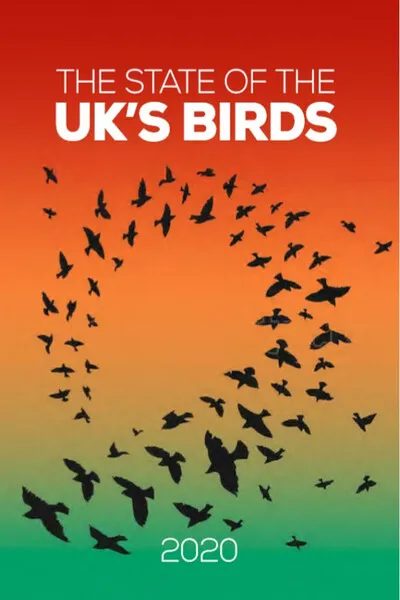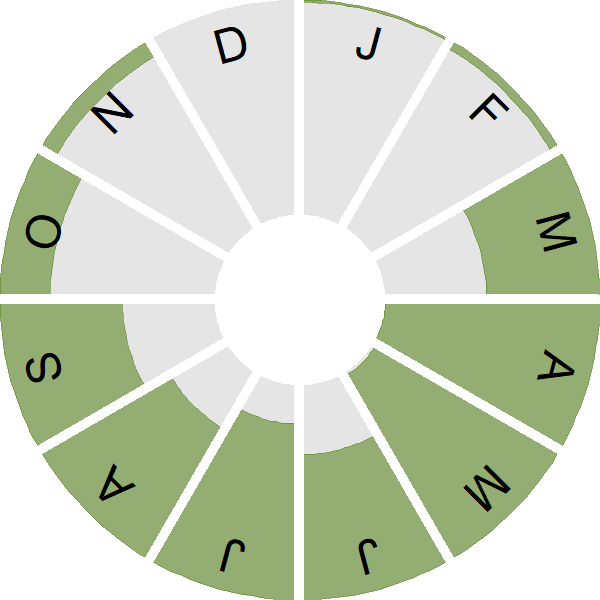Stone-curlew

Introduction
The 'Stone-curlew is a scarce, distinctive looking wader of sandy heaths and open ground with its stronghold in East Anglia.
With its patterned sand-coloured plumage the Stone-curlew is perfectly camouflaged and can be hard to spot. Further, it is mostly active at dusk and dawn, and sits still for most of the day avoiding the attention of predators. Its large eyes mean it can find and feed on ground-dwelling invertebrates even in very low light.
Numbers declined historically, reaching a low point in the 1980s, but dedicated conservation efforts mean breeding numbers have now more than doubled. Most individuals migrate for the winter, but they are increasingly leaving late and returning early, so are now recorded in almost all months.

Key Stats
Identification
Songs and Calls
Call:
Status and Trends
Conservation Status
Population Change
Historically, the Stone-curlew was found more widely across the UK, but numbers reported to the Rare Breeding Birds Panel dropped to a low point in 1977; however, numbers in the 1970s are likely to have been significantly under-reported and the true low point may have been in the mid-1980s when around 100 pairs were breeding (RBBP report 1985). Comprehensive fieldwork by the RSPB began in 1985 and the species has subsequently benefited from intensive conservation efforts with numbers peaking at 473 pairs in 2012. The five-year mean population estimate from the Rare Breeding Birds Panel for the period 2015–2019 was 328 breeding pairs, but complete survey coverage is no longer achieved following the end of EU-LIFE+ project funding in 2016 (Eaton et al. 2021). Despite the population increases, the range has decreased by 42% since the 1968–72 Atlas, with the contraction occurring prior to the 1988–91 Atlas (Balmer et al. 2013) and hence during the initial decline prior to increased conservation focus on this species.
Distribution
Stone-curlews prefer sparse vegetation and bare ground. In Britain this combination is provided either by short semi-natural grassland or by spring-sown crops. They breed in two main areas, the East Anglian Breckland and Salisbury Plain in Wiltshire, with a growing population on the Sandlings of coastal Suffolk. Small numbers have breed in Sussex.
Occupied 10-km squares in UK
or view it on Bird Atlas Mapstore.
or view it on Bird Atlas Mapstore.
European Distribution Map
Distribution Change
Change in occupied 10-km squares in the UK
or view it on Bird Atlas Mapstore.
or view it on Bird Atlas Mapstore.
Seasonality
Stone-curlews are summer visitors to southern and eastern heathlands from late March onwards. In some years birds linger into November and there are occasional winter records.
Weekly pattern of occurrence
The graph shows when the species is present in the UK, with taller bars indicating a higher likelihood of encountering the species in appropriate regions and habitats.

Movement
Britain & Ireland movement
Foreign locations of birds ringed or recovered in Britain & Ireland
Dots show the foreign destinations of birds ringed in Britain & Ireland, and the origins of birds ringed overseas that were subsequently recaptured, resighted or found dead in Britain & Ireland. Dot colours indicate the time of year that the species was present at the location.
- Winter (Nov-Feb)
- Spring (Mar-Apr)
- Summer (May-Jul)
- Autumn (Aug-Oct)

European movements
EuroBirdPortal uses birdwatcher's records, such as those logged in BirdTrack to map the flows of birds as they arrive and depart Europe. See maps for this species here.
The Eurasian-African Migration Atlas shows movements of individual birds ringed or recovered in Europe. See maps for this species here.
Biology
Productivity and Nesting
Nesting timing
Egg measurements
Clutch Size
Survival and Longevity
Survival is shown as the proportion of birds surviving from one year to the next and is derived from bird ringing data. It can also be used to estimate how long birds typically live.
View number ringed each year in the Online Ringing Report.
lifespan
Survival of adults
Survival of juveniles
Biometrics
Wing length and body weights are from live birds (source).
Ring Size
Classification, names and codes
Classification and Codes
- Order: Charadriiformes
- Family: Burhinidae
- Scientific name: Burhinus oedicnemus
- Authority: Linnaeus, 1758
- BTO 2-letter code: TN
- BTO 5-letter code: STOCU
- Euring code number: 4590
Alternate species names
- Catalan: torlit comú
- Czech: dytík úhorní
- Danish: Triel
- Dutch: Griel
- Estonian: jämejalg
- Finnish: paksujalka
- French: Oedicnème criard
- German: Triel
- Hungarian: ugartyúk
- Icelandic: Tríll
- Irish: Crotach Cloch
- Italian: Occhione
- Latvian: lielacis
- Lithuanian: paprastasis storkulnis
- Norwegian: Triel
- Polish: kulon (zwyczajny)
- Portuguese: alcaravão
- Slovak: ležiak úhorový
- Slovenian: prlivka
- Spanish: Alcaraván común
- Swedish: tjockfot
- Welsh: Rhedwr y Moelydd
- English folkname(s): Great/Norfolk Plover
Research
Causes of Change and Solutions
Causes of change
Losses since 1850 have been attributed to land enclosure, afforestation, lack of grazing, the cessation of rabbit warrening and the conversion of pasture to arable farmland (Balmer et al. 2013). The significant increases since the mid-1980s can be attributed to intensive conservation management and associated agri-environment schemes, which may also benefit other species including Skylark, Yellowhammer, Corn Bunting, Linnet and Lapwing (MacDonald et al. 2012) . A substantial decrease in Stone-Curlew abundance from 473 pairs to 319 pairs between 2012 and 2013 was attributed to the effects of a cold, wet spring in 2013 (Holling et al. 2015). Reported numbers have not subsequently reached the 2012 peak, but complete survey coverage has not been achieved since EU-LIFE+ project ended in 2016: consequently the direction of the recent trend less unclear and hence current drivers of change are also uncertain.
Publications (2)
The State of the UK's Birds 2020
Author: Burns, F., Eaton, M.A., Balmer, D.E., Banks, A., Caldow, R., Donelan, J.L., Douse, A., Duigan, C., Foster, S., Frost, T., Grice, P.V., Hall, C., Hanmer, H.J., Harris, S.J., Johnstone, I., Lindley, P., McCulloch, N., Noble, D.G., Risely, K., Robinson, R.A. & Wotton, S.
Published: 2020
The State of UK’s Birds reports have provided an periodic overview of the status of the UK’s breeding and non-breeding bird species in the UK and its Overseas Territories since 1999. This year’s report highlights the continuing poor fortunes of the UK’s woodland birds, and the huge efforts of BTO volunteers who collect data.
17.12.20
Reports State of Birds in the UK

Potential disturbance effects, nesting success and territory placement in Stone Curlews at Porton Down 2010-2012
Author: Ian G Henderson
Published: 2016
04.02.16
Reports

